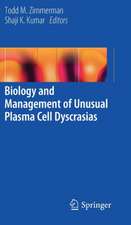New Developments in Thrombohemostatic Diseases
Editat de Viroj Wiwanitkiten Limba Engleză Hardback – 19 noi 2007
Preț: 960.63 lei
Preț vechi: 1315.30 lei
-27% Nou
Puncte Express: 1441
Preț estimativ în valută:
183.81€ • 192.43$ • 152.10£
183.81€ • 192.43$ • 152.10£
Carte disponibilă
Livrare economică 15-29 martie
Preluare comenzi: 021 569.72.76
Specificații
ISBN-13: 9781600214950
ISBN-10: 1600214959
Pagini: 191
Ilustrații: tables
Dimensiuni: 183 x 260 x 17 mm
Greutate: 0.53 kg
Editura: Nova Science Publishers Inc
ISBN-10: 1600214959
Pagini: 191
Ilustrații: tables
Dimensiuni: 183 x 260 x 17 mm
Greutate: 0.53 kg
Editura: Nova Science Publishers Inc
Cuprins
Preface; Coagulation Disorders in Liver Diseases; Platelet Transfusion; Prothrombin Deficiency; Thrombohemostatic Disorder in HIV Infection; Thrombohemostatic Disorder in Nutrition Deficiency; Update in Haemophilia; Non Dengue Mosquito-Borne Viral Hemorrhagic Fever; Thrombotic Disorders, the Indian Scenario(in a Sub-Tropical Country); Eclampsia, A Thrombohemostatic Disease; Newborn Bleeding, Breastmilk and Vitamin K Supplementation; Pulmonary Thromboembolism; Megakaryocytic Leukaemia; Update in Cerebrovascular Thrombohemostatic Disorder; Thrombohemostatic Disorder in Systemic Lupus Erythrematosus; Psuedohemophilia; Index.






















